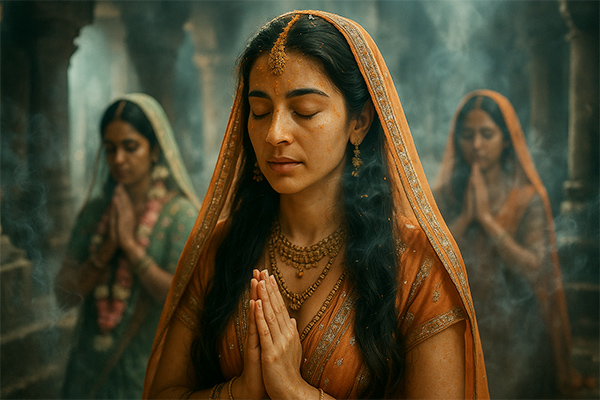
Have you ever paused to reflect on why, across centuries and cultures, people naturally fold their hands and close their eyes when they pray? In Hinduism, these gestures are so simple yet profound carry deep layers of spiritual, cultural, psychological, and even scientific significance.
In the hush of a temple, the fragrant swirl of incense, the chanting of mantras. We instinctively press our palms together and gently close our eyes. This moment, rich in symbolism, becomes a bridge between the individual and the cosmic, the finite and the infinite. While modern minds may see this as habit or ritual, its roots run far deeper, touching the highest philosophies of Sanatana Dharma.
In this detailed exploration, we will unravel:
- The spiritual meaning of Anjali Mudra (folded hands)
- The significance of closing the eyes during prayer
- Scriptural and cultural references
- Yogic and scientific perspectives
- Stories and anecdotes that illuminate this practice
- Relevance in modern times
- Cross-cultural connections
By the end of this reading, you will see these gestures not as mere customs, but as powerful tools for transforming prayer into an inner awakening.
The Sacred Symbolism of Folding Hands: Anjali Mudra
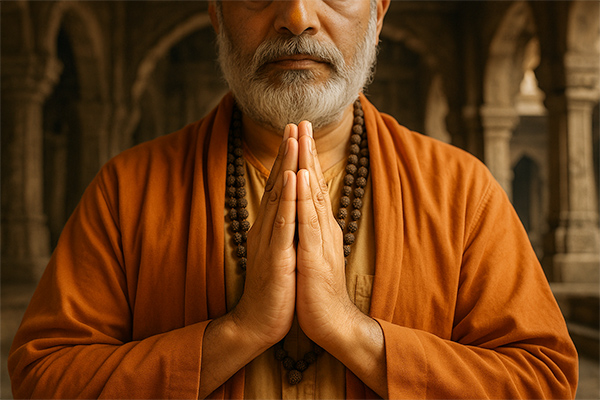
In Sanskrit, Anjali means “offering” and Mudra means “gesture” or “seal.” When Hindus press their palms together in prayer, they perform Anjali Mudra. The gesture of offering one’s heart in devotion.
This act has profound spiritual symbolism:
- Union of polarities: The left hand represents Ida Nadi (lunar energy, the feminine), and the right hand represents Pingala Nadi (solar energy, the masculine). Joining them balances these energies, harmonizing our inner world.
- Surrender of ego: Folding hands is a humble posture, a non-threatening, non-aggressive stance. It signifies letting go of pride, showing that “I bow before something greater than me.”
- Integration of body and mind: As the ten fingers meet, they symbolize ten directions coming together an invocation that all forces of nature harmonize with your intention.
- Heart connection: Placing the folded hands near the heart chakra (Anahata) opens us to love, compassion, and divine connection.
The practice is deeply woven into Hindu etiquette, not only during prayer but also while greeting elders, teachers, guests, or even strangers with Namaste. The greeting “Namaste” itself means “I bow to the divine in you.” This gesture, therefore, transcends language, social status, and culture, offering a silent but powerful expression of respect and oneness.
Closing the Eyes: An Act of Inner Pilgrimage
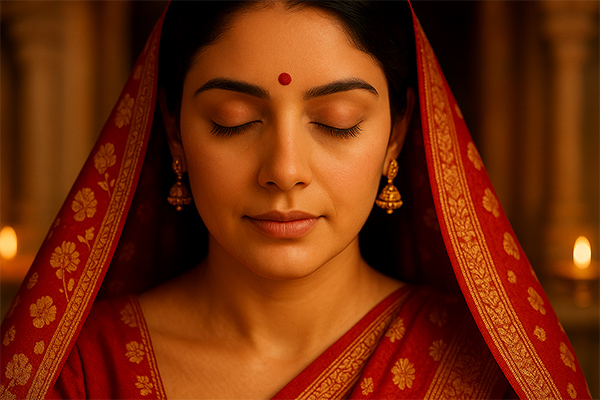
Hinduism describes the Divine as both saguna (with form) and nirguna (formless). When you close your eyes in prayer, you withdraw from the distractions of form to commune with the formless.
This is the practice of pratyahara in yogic science. The turning inward of the senses. Among the five senses, the eyes are the most dominant, constantly engaged in perceiving the external world. Closing them:
- Reduces sensory overload
- Encourages inner vision
- Supports dhyana (meditation) by lessening distractions
- Reminds us that God is not only outside but also within
The Chandogya Upanishad beautifully states:
Tat Tvam Asi — That Thou Art.
Meaning the same divinity you worship in a murti (idol) is present within your own heart. Closing the eyes honours this truth, encouraging us to look within rather than just outside.
Moreover, closing the eyes during prayer expresses surrender. It is an unspoken declaration: O Divine, I cannot fully comprehend you with these limited eyes. I trust, I let go, I feel you in the depths of my being.
Joining Hands and Closing Eyes Together: A Union of Devotion
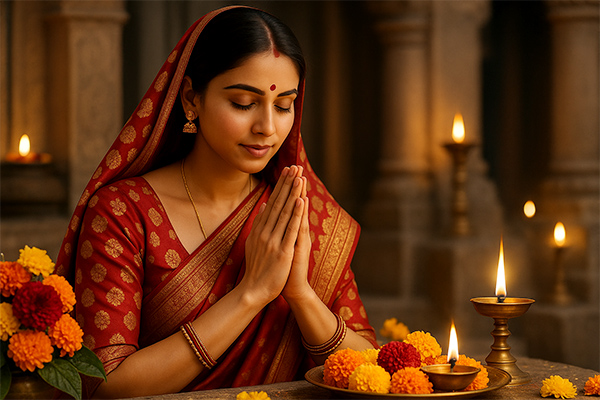
When these two gestures combine, folded hands and closed eyes, a profound spiritual synergy arises. You:
- Align your body (through posture)
- Align your energy (through hand placement)
- Align your mind (through pratyahara)
Together, they create the perfect conditions for bhakti (devotion) to blossom. Prayer stops being a social performance and becomes a sacred retreat into the heart.
It is a moment where the outer ceases and the inner expands. Where the boundary between you and the Divine softens.
Scriptural References and Philosophical Depth
These practices are not arbitrary but are deeply rooted in scriptural tradition:
Bhagavad Gita (6.13-14)
“Holding the body, head, and neck erect, motionless and steady, gazing at the tip of the nose and withdrawing the senses from outward objects, the yogi fixes the mind on Me.”
Though “gazing at the nose tip” is mentioned for certain meditation methods, the theme is sense withdrawal, pratyahara, the same foundation of closing the eyes.
Manu Smriti (2.121)
“He who greets others with folded hands, speaks truthfully, and maintains humility gains the blessings of the wise and the gods.”
Yoga Sutras of Patanjali (2.54)
Pratyahara is the withdrawal of the senses from their objects, which resembles the essential nature of the mind.
Patanjali’s guidance makes it clear: sense-withdrawal is essential before meditation or prayer becomes transformative.
Cultural Narratives and Symbolic Stories
Hindu stories also bring these gestures alive.
Story of Prahlada
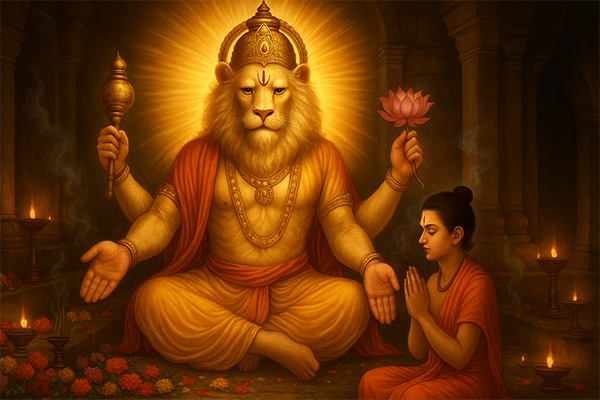
Prahlada, the young devotee of Narayana, would fold his hands and close his eyes even while tortured by his father Hiranyakashipu. Inwardly absorbed in the Lord’s name, no outer torment could shake his devotion.
Mirabai’s Bhakti
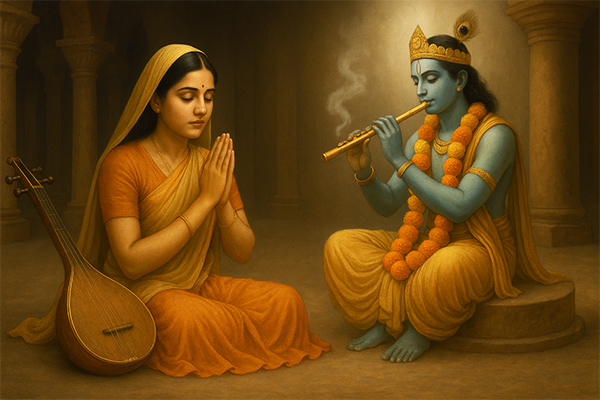
Mirabai, the great saint-poet, was often lost in prayer with folded hands, eyes closed, singing to Krishna. Her gesture symbolized total surrender, blocking out a hostile world that tried to shame or silence her.
Hanuman
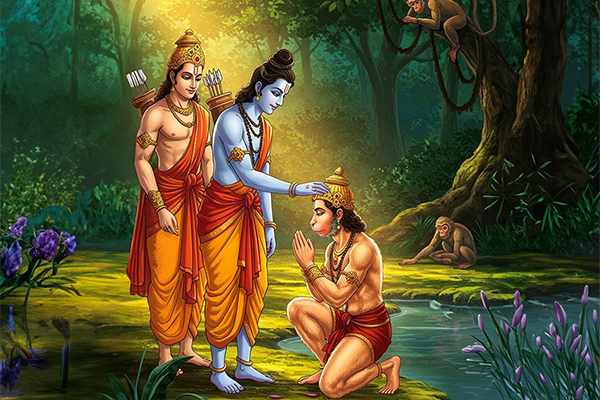
In many Ramayana depictions, Hanuman folds his hands before Shri Rama, closing his eyes with tears of gratitude. A powerful image of humility and seva bhava (spirit of service).
These stories show that folding hands and closing eyes is far more than etiquette. It is a living language of love for the Divine.
Yogic and Scientific Insights
Hinduism beautifully integrates spiritual practice with subtle psychology. Modern neuroscience now validates what yogis knew:
- Alpha and theta brain waves increase with closed eyes, encouraging calmness and creative, spiritual states.
- Stimulation of the vagus nerve through thumb pressure on the sternum slows heart rate, lowers stress hormones, and creates a sense of safety.
- Balanced hemispheric activity (right and left brain) improves focus.
- Interoception (awareness of inner states) is heightened when eyes close, supporting heartfelt prayer.
- A 2011 study in Neuropsychologia showed people remember information and focus better when their eyes are closed because their cognitive load drops and they can tune inward.
Similarly, folding hands creates a subtle energy circuit in yogic science, containing prana (life force) within the body rather than leaking it through restless movements.
Cross-Cultural Spiritual Echoes
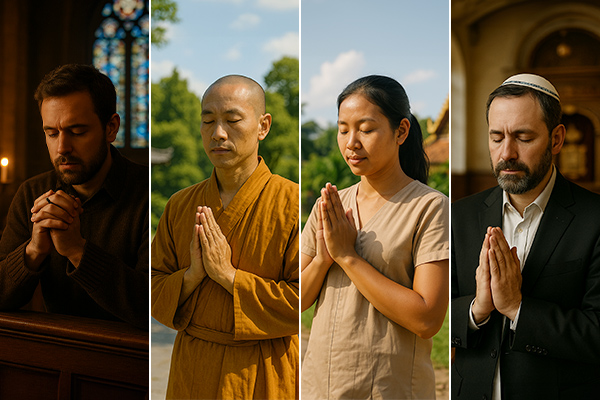
It is beautiful to note that folded hands and closed eyes are not unique to Hinduism but appear across the world:
Christianity:
Folding hands and closing eyes shows humility and focus on the Lord.
Buddhism:
Anjali Mudra and half-closed eyes are essential for meditative calmness.
Southeast Asia:
The Thai Wai greeting and Cambodian Sampeah mirror the same respect.
Judaism:
Though with different gestures, Jewish blessings often involve laying of hands and closing eyes for concentration.
These shared practices point to a universal spiritual grammar. We as humans seem to know intuitively that folding hands and closing eyes help us honour something higher.
Modern Relevance: Why We Still Do This Today
In our fast-paced, hyper-connected world, these ancient practices have even greater relevance:
- Folding hands is a non-contact, hygienic greeting, appreciated in modern health-conscious times.
- It anchors you in humility and presence amid a competitive world.
- Closing the eyes gives a moment of inner silence, a break from constant stimulation.
- Together, they encourage mindfulness, which is desperately needed in today’s distracted minds.
Many yoga studios and meditation retreats around the globe have reintroduced these gestures as a way to connect East and West, science and spirituality, ancient and modern.
Even among busy, urban Hindus who may not perform elaborate pujas, you will still see them pause, join their palms, and gently shut their eyes for a moment of heartfelt prayer. This act is a reminder that no matter how much the world modernizes, the human spirit craves stillness and surrender.
Practical Benefits for Daily Life
In a practical sense, here’s what you gain by folding hands and closing eyes regularly:
- Better mental focus
- Lower stress levels
- Emotional resilience
- Improved relationships (because you carry more humility and presence)
- A sense of spiritual protection and belonging
- Greater patience and compassion
Children who are taught this from an early age often carry respect, self-discipline, and a balanced worldview into adulthood.
Contemporary Anecdote: A Corporate Namaste
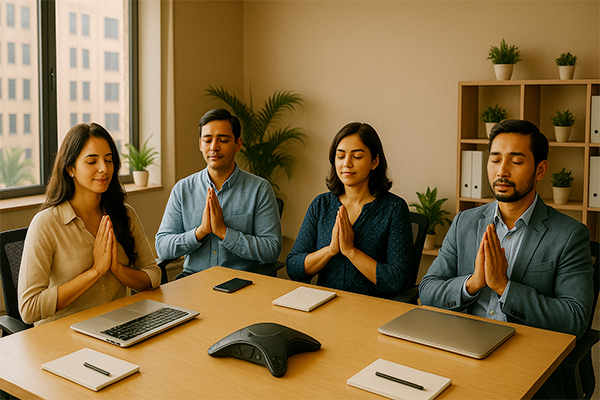
In corporate India today, it is not uncommon to see colleagues greet with folded hands rather than a handshake, especially after the global pandemic. In wellness programs, instructors encourage folding hands, closing the eyes, and taking a deep breath before meetings, a modern, secular echo of ancient spiritual science.
Such practices create an energy of mutual respect and calm, even in professional environments.
Inward Science, Outward Devotion
When you fold your hands, you unite your physical self.
When you close your eyes, you unite your mental self.
When you combine both, you create an inner sanctuary where prayer becomes more than words, it becomes an experience.
Hinduism always taught that the Divine is not just in idols, not just in rituals, but also within. By folding the hands, you humble the body. By closing the eyes, you humble the mind. Together, you create a channel through which your heart can truly offer itself to the higher Self, beyond any boundaries.
Deepen Your Devotion with Rudra Centre Puja Services
Folding your hands and closing your eyes prepares you to receive divine blessings with humility and focus, the very same attitude that empowers authentic Vedic rituals. If you wish to elevate your spiritual practice beyond daily prayers, Rudra Centre offers expertly conducted online pujas performed according to precise Vedic traditions.
These ceremonies help align your inner devotion with powerful spiritual energies, supporting your journey of surrender and higher awareness, just as the simple act of Anjali Mudra and closing the eyes does.
Click on the link to explore Rudra Centre’s online puja services and experience the transformative power of traditional rituals performed with sincerity and scriptural precision.
Conclusion
Folding the hands and closing the eyes during prayer is a profound, universal language of the soul. It carries the fragrance of humility, the grace of surrender, the science of energy balance, and the poetry of oneness.
In a world increasingly obsessed with speed and spectacle, these simple gestures remind us to pause, turn within, and recognize the sacred, both around us and within us.
So, the next time you fold your hands and close your eyes, remember you are not performing an empty ritual. You are weaving your heart, mind, and body into a tapestry of devotion, a living thread connecting you to the vast, infinite Divine.
May your folded hands and closed eyes become gateways to your highest Self.


-in-Astrology.jpg)
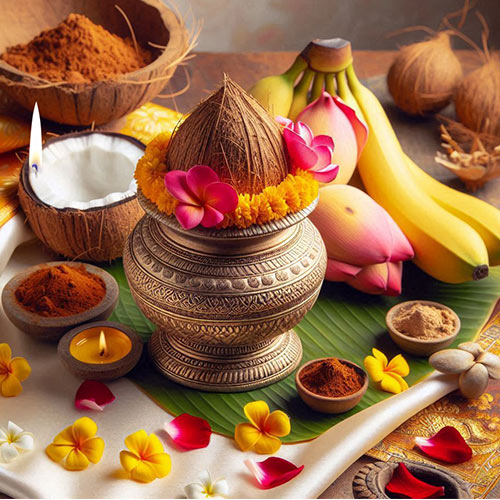
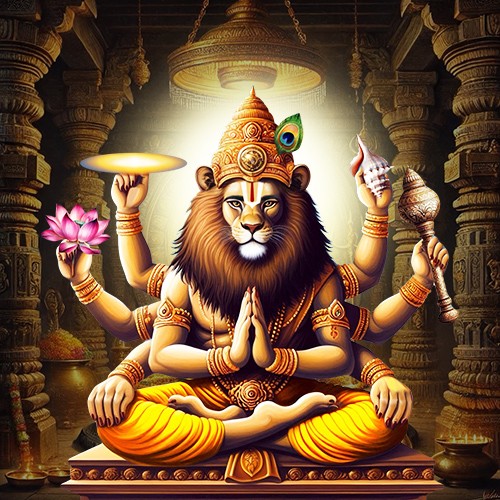

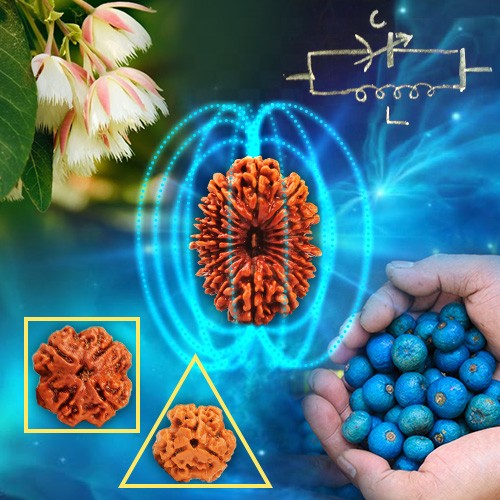

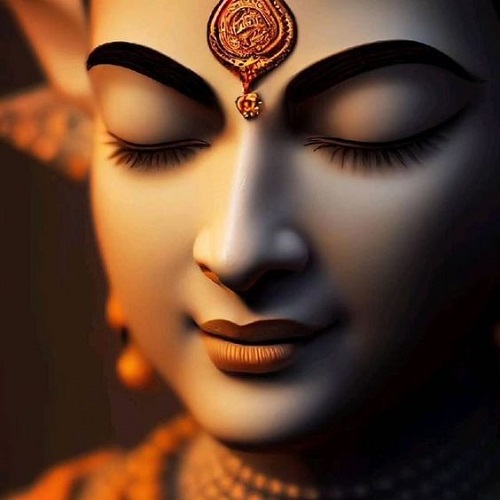
.jpg)
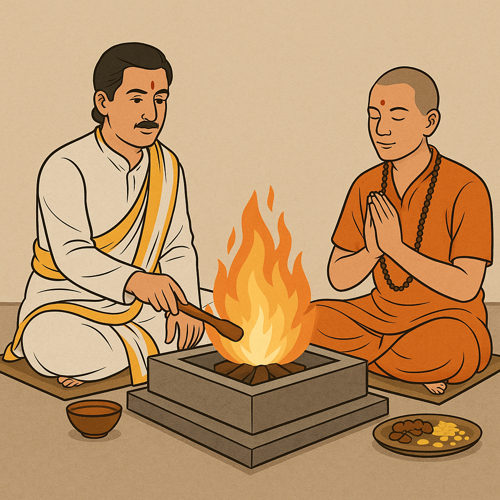
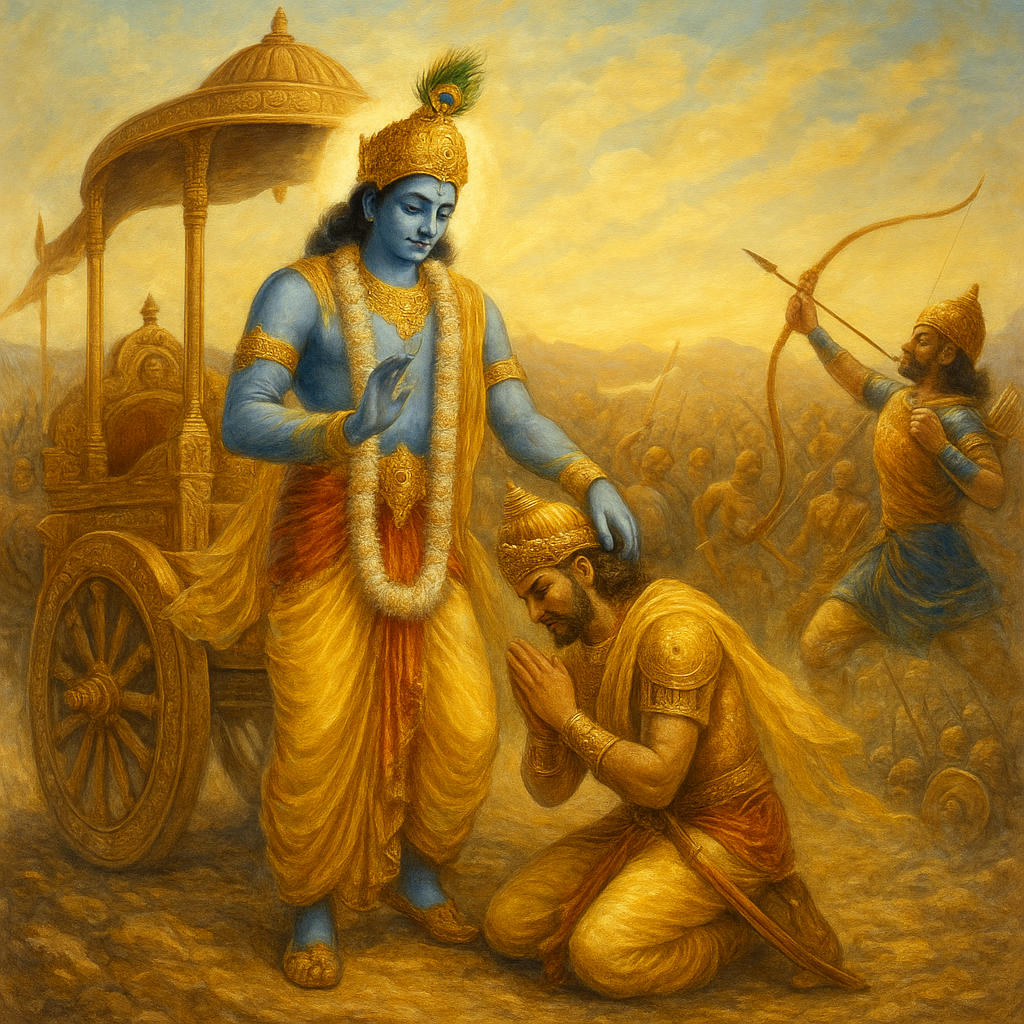
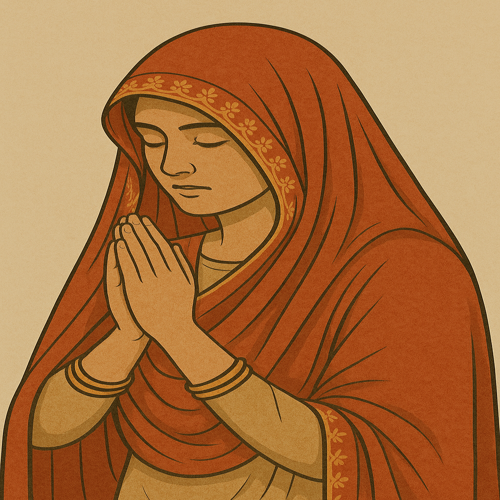
Comments 0
Leave your thought here